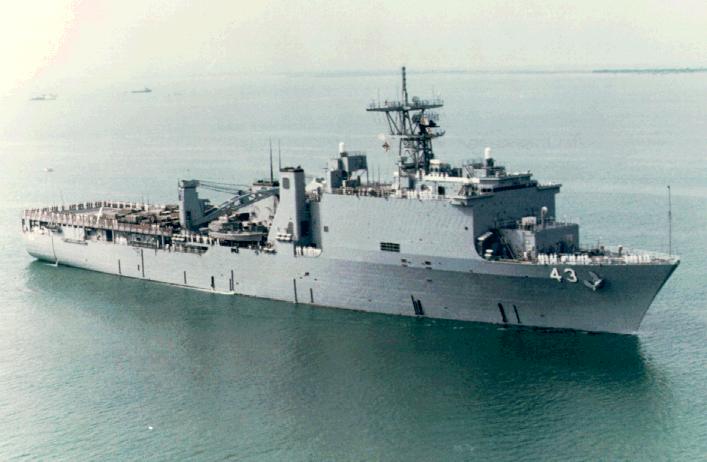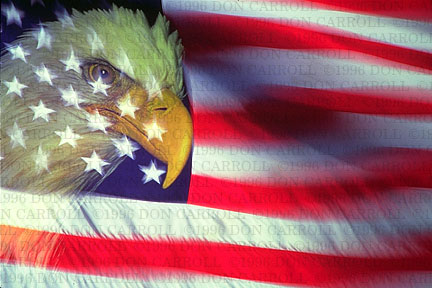
Posted on 03/03/2003 5:34:39 AM PST by SAMWolf

So, how are you doing this evening?
Bump!
Great thread SAM. Thanks for working so hard.
Night SAM.

Now let's go back to the summer of 1813 for a moment. At the star-shaped Fort McHenry, the commander, Maj. George Armistead, asked for a flag so big that "the British would have no trouble seeing it from a distance". Two officers, a Commodore and a General, were sent to the Baltimore home of Mary Young Pickersgill, a "maker of colors (flags)," and asked her to make the flag.
Mary and her thirteen year old daughter Caroline, working in an upstairs front bedroom, used 400 yards of best quality wool bunting. They cut 15 stars that measured two feet from point to point. Eight red and seven white stripes, each two feet wide, were cut. Laying out the material on the malthouse floor of Claggett's Brewery, a neighborhood establishment, the flag was sewn together. By August it was finished. It measured 30 by 42 feet and cost $405.90. The building, which was restored in 1953, is now the Star-Spangled Banner Flag House, a museum.
At 7 A.M. on the morning of September 13, 1814, the British bombardment began, and the flag was ready to meet the enemy. The bombardment continued for many hours, the British firing 1,500 bombshells that weighed as much as 220 pounds and carried lighted fuses that would supposedly cause it to explode when it reached its target. But they weren't very dependable and often blew up in mid air. From special small boats the British fired the new Congreve rockets that traced wobbly arcs of red flame across the sky.
The Americans had sunk 22 vessels so a close approach by the British was not possible. That evening the cannonading stopped, but at about 1 A.M. on the 14th, the British fleet roared to life, lighting the rainy night sky with grotesque fireworks. Francis Scott Key, Col. Skinner, and Dr. Beanes watched the battle with concern. They knew that as long as the shelling continued, Fort McHenry had not surrendered.
Long before daylight there came a sudden and mysterious silence. What the three Americans did not know was that the British land assault on Baltimore as well as the naval attack, had been abandoned. Judging Baltimore as being too costly a prize, the British officers ordered a retreat. Waiting in the predawn darkness, Key waited for the sight that would end his anxiety; the joyous sight of Gen. Armistead's great flag blowing in the breeze. When at last daylight came, the flag was still there!
Being an amateur poet and having been so uniquely inspired, Key began to write on a piece of paper he had in his pocket. Sailing back to Baltimore he composed more lines and in his lodgings at the Indian Queen Tavern (now known as the George Washington House) he finished the poem.
Judge J. H. Nicholson, his brother-in-law, took it to a printer and copies were circulated around Baltimore under the title "Defence of Fort M'Henry". Two of these copies survive. It was printed in a newspaper for the first time in the Baltimore Patriot on September 20, 1814, then in papers as far away as Georgia and New Hampshire. To the verses was added a note "Tune: Anacreon in Heaven." In October a Baltimore actor sang Key's new song in a public performance and called it "The Star-Spangled Banner".
Immediately popular, it remained just one of several patriotic songs until it was finally adopted as our national anthem on March 3, 1931. But the actual words were not included in the legal documents. Key himself had written several versions with slight variations, so differences in the exact wording still remain.
The flag went on view, for the first time after flying over Fort McHenry, on January 1,1876 at the Old State House in Philadelphia for the nation's Centennial celebration. It now resides in the Smithsonian Institution's Museum of American History. An opaque curtain shields the now fragile flag from light and dust. The flag is exposed for viewing for a few moments once every hour during museum hours.
Francis Scott Key was a witness to the last enemy fire to fall on Fort McHenry. The Fort was designed by a Frenchman named Jean Foncin and was named for then Secretary of war James McHenry a Signer of the U.S. Constitution. Ft. McHenry enjoys the designation of being a national monument and an historic shrine. Since May 30th, 1949 our flag has flown continuously, by a Joint Resolution of Congress, over a monument marking the site of Francis Scott Key's birthplace, Terra Rubra Farm, Carroll County, Keymar, Maryland.
The copy that Key wrote in his hotel September 14,1814, remained in the Nicholson family for 93 years. In 1907 it was sold to Henry Walters of Baltimore. In 1934 it was bought at auction in New York from the Walters estate by the Walters Art Gallery, Baltimore for $26,400. The Walters Gallery in 1953 sold the manuscript to the Maryland Historical Society for the same price. Another copy that Key made is in the Library of Congress.

Ships of this class support amphibious operations including landings via Landing Craft Air Cushion (LCAC), conventional landing craft and helicopters, onto hostile shores. These ships transport and launch amphibious craft and vehicles with their crews and embarked personnel in amphibious assault operations.
Surgeon General's Warning to Saddam Hussein: You will see stars or we will dress you in stripes--there's no third way.
Note: Regarding the Assembly of Bands of Concerned Citizens to Seize Certain Journalists Sympathetic to the Enemy, Dan Rather and Peter Jennings Have Until Sundown to Flee to Canada--Thereafter They Shall Be Subject To General Ridicule and The Tar Pot.
[400 yards of the finest wool bunting--for Nancy with five sewing machines and a serger it would be a feat--yet Mary Young Pickersgill and her thirteen-year-old daughter Caroline had no such machinery.]


Long May It Wave
Disclaimer: Opinions posted on Free Republic are those of the individual posters and do not necessarily represent the opinion of Free Republic or its management. All materials posted herein are protected by copyright law and the exemption for fair use of copyrighted works.